SAHMRI’s 10th anniversary and health research highlights
It’ll be 10 years this week since the SA Health and Medical Research Institute on North Tce – affectionately dubbed the Cheesegrater – opened. Here’s its greatest medical breakthroughs.
SA Weekend
Don't miss out on the headlines from SA Weekend. Followed categories will be added to My News.
Wags quickly dubbed the eye-catching building “the Cheesegrater” as it changed the city’s skyline and it has become emblematic of Adelaide’s great leap forward into the health-wealth biomedical research industry.
The South Australian Health and Medical Research Institute – SAHMRI – turns 10 on November 29 and in just a decade has fondly cemented itself in the public consciousness with a cool headquarters in the Adelaide BioMed City precinct.
READ ON FOR SAHMRI’S 10 GREATEST HEALTH RESEARCH BENEFITS
SAHMRI was incorporated in December 2009 after a review by Professor John Shine and Alan Young recommended establishing a flagship research institute to increase South Australia’s health and medical research capacity.
The federal government’s Health and Hospitals Fund provided $200m to build the eye-catching headquarters in the North Terrace area that has since become the largest health and medical research precinct in the southern hemisphere.
It opened on November 29, 2013 and, as a charitable trust, its work is supported by corporate sponsors, private philanthropists and philanthropic foundations.
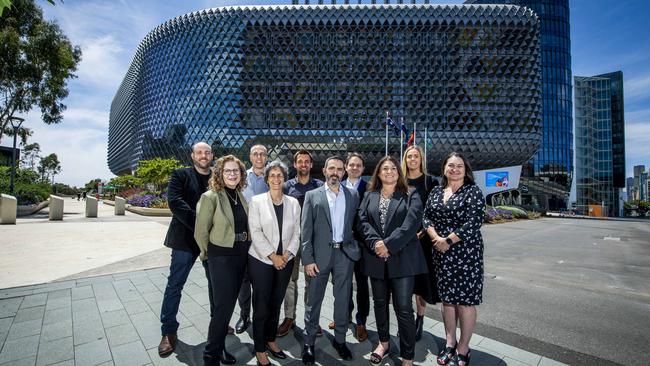
As the state’s car industry folded, the biomedical research industry thrived.
As well as SAHMRI, multibillion-dollar investments in the BioMed precinct include the $2.4bn Royal Adelaide Hospital, $246m University of Adelaide Health and Medical Sciences Building, the $247m University of South Australia Cancer Research Institute and the planned new $3.2bn Women’s and Children’s Hospital.
Now also on the skyline is the $500m Australian Bragg Centre for Proton Therapy and Research – the first centre in Australia to deliver cancer-killing proton beam therapy.
While SAHMRI was nicknamed the Cheesegrater for its distinctive exterior, Adelaide-based architectural firm Woods Bagot says it was actually inspired by a pinecone.
Trivia fact: it has more than 15,000 triangular windows, with around 6000 of those covered by distinctive medal hoods.
While stunning from the outside, it is what goes on inside that is inspiring.
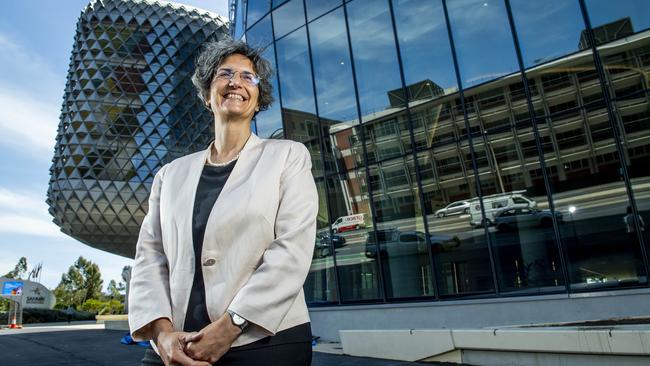
More than 700 researchers, more than 800 projects, more than 21,000 published papers all sound impressive.
However, it is the “bench to bedside” philosophy that drives SAHMRI, with a focus on getting research out to help people rather than gathering dust in journals left in libraries.
Even the recreation areas are designed to ignite ideas. Researchers from different areas, from cancer and hearts to children’s health and more, mix freely in shared areas, where animated conversations can cross-pollinate research ideas.
SAHMRI has four major research themes:
• Aboriginal Health Equity: Engaging Indigenous people and communities in research that affects them while developing the next generation of Indigenous researchers to empower self-determination.
• Lifelong Health: Addressing the biggest health issues across the lifespan including heart disease, diabetes, dementias, mental health and visceral pain.
• Precision Cancer Medicine: Dedicated to understanding patient-specific responses to disease or treatment to better predict patient outcomes and deliver more personalised, targeted interventions.
• Women and Kids: Improving health and wellbeing of women and families to ensure all children can reach their full potential by improving access to quality maternal and peri-natal health care.
In 10 years, SAHMRI has become a symbol of the city – here are their 10 “Grate-est” hits as judged by a survey of the institute’s community, in no particular order.
A prevention for preterm birth
SAHMRI Women and Kids’ researchers discovered that simple, safe, readily available omega 3 supplements can play a significant role in preventing preterm birth.
Now – thanks to a blood test the team also developed – they can identify who most benefits from omega 3 supplementation, giving their baby the best chance of arriving full term.
The team led by Professor Maria Makrides instituted a world-first test and treat program targeting a reduction in preterm birthrates. Preterm birth is the major cause of death and disability for children aged under five years.
Makrides’ team has shown that one in six pregnant women are depleted in omega-3 fatty acids and that correcting this depletion will reduce their risk of early preterm birth by about 70 per cent.
The team has implemented an extensive education program for health professionals and consumers to deliver targeted advice for women.
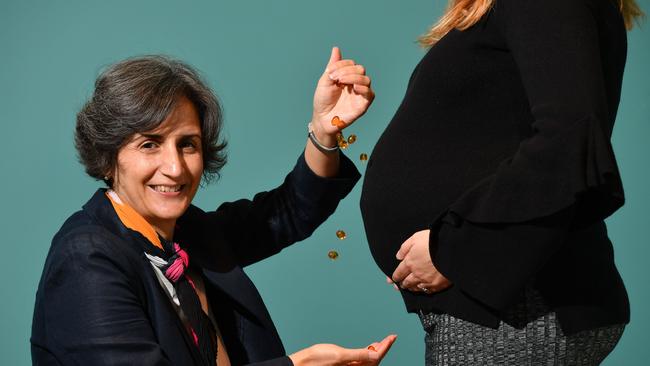
“My work has shown that 17 per cent of pregnant women are depleted in omega-3 fatty acids and that correcting this depletion will reduce their risk of early birth by more than 70 per cent,” Makrides says.
A campaign now underway urges pregnant women to get tested in their first trimester and to take omega-3 supplements if needed to help prevent preterm births.
This statewide program is being watched by jurisdictions worldwide with a view to adopting it for their populations.
Makrides, the 2022 South Australian Scientist of the Year, is now SAHMRI’s executive director having been the leader of the SAHMRI Women and Kids theme for the past decade and serving as the institute’s deputy director since 2018.
World-leading leukaemia research close to a cure
SAHMRI enjoys an international reputation for breakthroughs in blood cancer research. Professor Timothy Hughes was the founding leader of what was then known as SAHMRI’s Cancer theme.
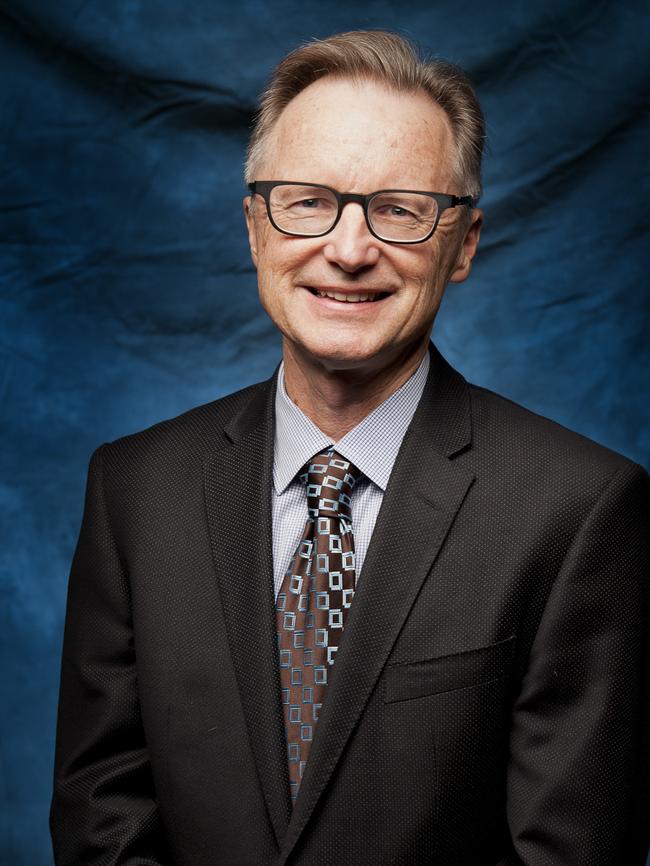
Leukaemia can be a killer.
For people with some types of leukaemia – like chronic myeloid leukaemia (CML) – it no longer is.
SAHMRI researchers have been at the forefront of global efforts to develop tyrosine kinase inhibitors that have reduced CML from a death sentence to a manageable chronic condition.
CML is just one of the leukaemias SAHMRI is tackling.
The institute is also home to the national genomic referral centre for acute lymphoblastic leukaemia – the most common non traumatic cause of death for Australian children under five years old.
This group’s work doesn’t just promise future breakthroughs – they work alongside oncologists to improve outcomes for individual patients right now.
Bringing purpose and direction to Aboriginal health research
Improving Indigenous health is fundamental to SAHMRI’s vision.
Before beginning research, responding to a call from the Aboriginal community to ensure research is done the right way, the institute committed to a deep, consultative review of how it should be done to best serve the Aboriginal community.
The SA Aboriginal Health Research Accord lays out nine principles by which all Indigenous research should be conducted.
This foundational work has led to better clinical care, like that being delivered by the SA Aboriginal Chronic Disease Consortium, and better collaborative research programs such as the PROPHECY Aboriginal Diabetes Study.
Clinical research delivering better heart health in real time
SAHMRI’s heart research is embedded within clinical care to accelerate breakthroughs and deliver better health outcomes in real time.
In a major breakthrough, researchers worked closely with industry to show for the first time that very aggressive and early lowering of cholesterol after a heart attack can reduce the risk of a repeat heart attack.
This key finding has led to larger international clinical trials that are ongoing.
Separately, the team discovered that colchicine – an ancient drug used to treat gout – can reduce inflammation after a heart attack.
These combined discoveries add to the kitbag of treatments doctors have to manage people who have had, or are at risk of having, a heart attack.
Unlocking a clue to healthy ageing
A blood test to check how well you are ageing has been developed by SAHMRI’s Lysosomal Health in Ageing team and now they are working on ways to wind back the clock.
The test examines how well the cells are keeping house, cleaning up debris and recycling waste, in a process called “autophagy”.
Dr Tim Sargeant’s group led the development of a simple blood test to measure autophagy in people.
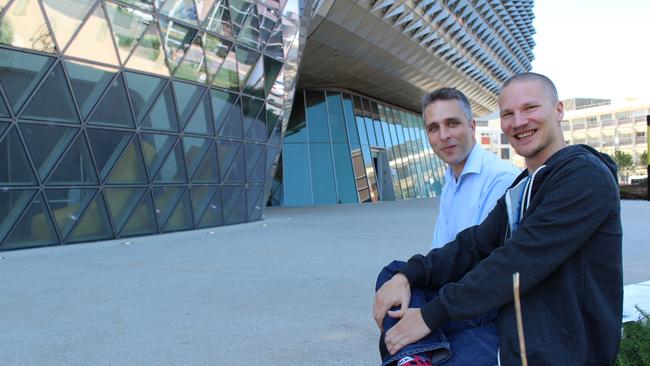
The blood test they developed measures autophagy, which is the body’s cellular recycling system. When the recycling system breaks down, junk accumulates causing many of the problems we all associate with ageing and age-related diseases like dementia.
The blood test opens the door to a virtually endless array of clinical trials to investigate ways we can all age better and live longer.
Sargeant wants the test to be added to the standard health check-up, alongside tests for blood pressure and cholesterol.
“Our aim is for the blood test to provide clinicians with a baseline from which to experiment with preventive strategies to increase autophagy in their patients, including everything from lifestyle adjustments to medications,” he says.
Creating brain avatars to accelerate neuroscientific discovery
The human brain has long challenged medical research, leaving many conditions without proper treatments.
Over the past 10 years, a team within SAHMRI’s Hopwood Centre for Neurobiology has re-invented how to study the human brain by bio-engineering tiny brain replicas from patient live stem cells.
The team developed the foundation of this model in the form of a culture medium to grow these brain cells in a petri dish.
They continue to develop the brain organoids to be more realistic, enabling the screening of drugs without putting people at risk.
Today, the technology is in use seeking treatments for people with Parkinson’s, brain cancer and children with dementia, offering new hope to those affected by such terrible conditions.
Dubbed the “brain in a dish” project, the work by Associate Professor Cedric Bardy’s team offers unprecedented insights into the human brain’s unique genetics and biophysical properties in both health and disease.

The work includes growing brain cells in the lab from children with Sanfilippo syndrome, a rare genetic condition that causes fatal brain damage.
Researchers are comparing the appearance and function of the Sanfilippo cells to cells from healthy children, and using them to screen a panel of already available drugs to identify potentially effective therapies.
“We hope to repurpose drugs initially designed for more common adult dementia and neurodegenerative disorders,” Bardy says.
Guiding health policy for broad benefits
Through direct input to public policy and interventions in tobacco and vaping, obesity prevention, and alcohol, the Health Policy Centre at SAHMRI has reduced the impact of chronic diseases including cancer, heart disease and diabetes.
The centre is highly collaborative, providing policymakers and health services with real-time evidence to inform decision making.
It supported Australia’s world-leading plain packaging of tobacco reforms and is working with government on strategies to curb vaping.
During the pandemic, the centre formed a dedicated Covid-19 Analytics Unit. Its real-time evidence and Covid modelling informed the decisions of chief public health officer Professor Nicola Spurrier and the state’s Covid-19 response, helping make SA one of the safest places in the world, while preserving our way of life as much as possible.
Pain relief for millions worldwide
Imagine if visceral pain affected your every waking hour, with next to no relief available.
That’s the reality for millions of people across Australia and the world who suffer from irritable bowel syndrome (IBS).
Now though, thanks to research from SAHMRI’s Visceral Pain group, in collaboration with Ironwood Pharmaceuticals and researchers across the globe – relief is available.
Linaclotide is a treatment that significantly reduces symptoms of abdominal pain, bloating and constipation for people with IBS.
The work is giving people with IBS back a quality of life most of us take for granted.
The research has included work with tarantulas to see how their painful toxins can be blocked.
Improving aged care across the nation
To solve a problem, you need to understand the problem.
The quality of aged care services received by our ageing population has been in focus for some time now, including a royal commission.
The Registry of Senior Australians at SAHMRI has developed an efficient, standard Outcome Monitoring System that uses 15 key measures to enable comparisons between aged care providers of varying sizes, case mix, and circumstances to identify best and worst performing providers.
The system has led to major national reforms for the sector and is being used to improve aged care service delivery across the nation.
Pushing the boundaries of radiopharmaceuticals and molecular imaging
In the basement of SAHMRI’s Cheesegrater, enclosed in a bunker of 3m thick concrete walls, lives a beacon of innovation and hope.
A decade ago SAHMRI became home to SA’s first, and still only, cyclotron – affectionately known as Mathilda.
Every day of the year, the team starts work at 1am to produce radiopharmaceuticals essential for the diagnosis, and increasingly treatment, of disease.
With Mathilda, SAHMRI’s radiochemists and engineers have transformed healthcare and advanced the boundaries of medical research in SA – achieving breakthroughs in cancer therapy, neuroimaging and more.
Mathilda is just one example of the world-class cutting-edge technology that SAHMRI has helped bring to South Australia.
These include Australia’s only photon counting CT scanner, the revolutionary Cima. X MRI, Australia’s first ultra-high throughput T7 sequencer and Australia’s only 4D preclinical lung scanner.
Soon, SAHMRI will be home to our nation’s first proton therapy unit for treatment and research – delivering the most advanced cancer treatment available for children, young adults and people with tumours close to vulnerable organs.
It will be housed in the Australian Bragg Centre for Proton Therapy and Research next to the Cheesegrater.





